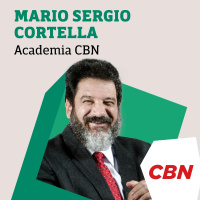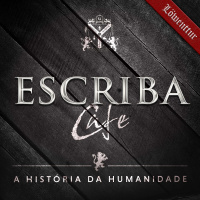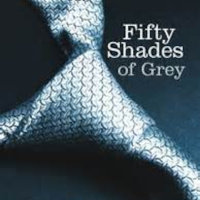Synopsis
Leading writers on arts, history, philosophy, science, religion and beyond, themed across a week - insight, opinion and intellectual surprise
Episodes
-
Art in a Cold Climate: Elizabeth Hay on Painting Place III by David Milne
17/12/2015 Duration: 13minThe Canadian novelist Elizabeth Hay considers the significance of a painting which symbolises much about her country, once famously described having "too much geography". The great achievement of Canadian painter David Milne, says Hay, was to take the impersonal vastness of the nation's landscape, and make it personal. Milne, who died in 1953, was a modernist painter who lived in a cabin in northern Ontario and eked out a frugal lifestyle while producing paintings "full of immense space and airiness", says Hay. His work, "Painting Place III" was created when he awoke from an afternoon nap in a hollow and saw the landscape framed by spruce trees. It was his management of the scene that made it personal, she observes. "He nestled a painting box, a quart jar, and tubes of paint in the foreground, turning the picture into a self-portrait of sorts, a portrait of someone imbued with a sense of landscape."Like Milne, Hay's own writing has reflected the immensity of Canada's vast northern landscape. "What we have in
-
Art in a Cold Climate: Hallgrimur Helgason on Fish Processing in Eyjafjord by Kristin Jonsdottir
17/12/2015 Duration: 13minArtist and writer Hallgrimur Helgason asks what one Icelandic painting can say in a culture that is primarily verbal. The visual arts got off to a slow start in Iceland, he observes. "Our first ever exhibition of paintings opened in the year 1900. The history of Icelandic art reads like a short story." For a thousand years Icelandic culture had been dominated by the Sagas. When paintbrushes and oil paints finally arrived in the 19th century, early artists focused on the country's stunning scenery. But in 1914 a bright new talent emerged blinking in the northern light."Fish Processing in Eyjafjord'" captures a lively group of women in the bright morning sunshine, preparing salted cod for export. "Here everything is a first", says Helgason. "We're at the dawn of our art history, at the dawn of the twentieth century, at the dawn of a beautiful day by the beautiful fjord." And the artist represents another first, as one of the very earliest women painters in Iceland: Kristin Jonsdottir, who had returned from Denm
-
Art in a Cold Climate: Mette Moestrup on Pia Arke's Camera Obscura
17/12/2015 Duration: 13minDanish writer Mette Moestrup praises the way artist Pia Arke explored the difficult relationship between Denmark and Greenland, its former colony. Arke was the child of a Danish father and a Greenlandic mother. "My pictoral work deals almost exclusively with the silence that surrounds the bonds between Greenland and Denmark," she wrote. "I was myself born into that silence."One of Arke's projects involved the construction of a giant Camera Obscura on the site of her long demolished childhood home at Cape Nuugaarsuk in Greenland. The camera looked like "a big ice-cube among the barren mountains", says Moestrup. The artist was able to sit inside the camera as she took landscape and portrait shots. "Here," says Moestrup, "she created beautiful, haunting, hazy photographs of the bare rocky formations, the water and the ice. A lost home, and a lost view recreated via the nomadic camera house."This edition of The Essay is one of a series in which five writers each consider the significance of a work of art to their
-
Northern Lights - Cornerstones: Alaska
11/12/2015 Duration: 13minEnvironmental journalist Jason Mark visits Alaska's remote northern rim, and on the shores of the Arctic Ocean at a barbecue with Inuits, he reflects on the impact of our lust for hydrocarbons. Whilst the ice melts beneath them, so the search goes on for oil in these northern parts. He tries to grasp what he sees as the bitter ironies of climate change, confirmed by his encounters with Inuit hunters and others who describe how much the weather is warming. Producer: Mark Smalley.
-
Cornerstones: Siberia
10/12/2015 Duration: 13minDaniel Kalder conjures up the vast landscapes east of the Urals, where taiga becomes tundra. Siberia is more a state of mind than a place, given how the term encompasses not only the endless forests of the taiga but also that which lies beyond them, where the trees dwindle, diminish and finally give way to the tundra's ceaseless realms of permafrost. As part of Radio 3's Northern Lights season Kalder, a travel writer who's lived in and travelled around Russia, reflects on how ice and wind vies with geology to shape these memorable tracts. And in that land of ice, not just the cryogenically preserved woolly mammoths, but is it true that former Soviet apparatchiks are buried with their medals, in full state regalia? Producer: Mark Smalley.
-
Cornerstones: Greenland Caves
09/12/2015 Duration: 15minGeologist and climatologist Gina Moseley led a team of cavers into an unknown system of limestone caverns in northern Greenland in the summer of 2015. Her findings will keep her busy for a long time to come. She describes what it was like wriggling into these remote spaces, knowing they were the first people to have ever done so. This in a place where the rest of the world's population of 7.3 billion people lives well south of their northern latitude. The wonder of being there contrasts with the work that lies ahead of her, to analyse the flowstone in the caves they came to sample, and to find out what it tells us of previous times when the earth's climate warmed up, just as it's doing again now.
-
Cornerstones - The Canadian Arctic
08/12/2015 Duration: 13min'Rock talk' is what the travel writer Sara Wheeler recalls of her time cooped up in cold, billowing tents with a horde of geologists well north of Hudson Bay up in Canada's Arctic. That and the unforgettable smell of drying socks. Visiting a geoscientific mapping project whilst researching the circumpolar Arctic had its highs, as well as its lows. Besides the socks was the extraordinary encounter with a browned circle on the ground, an old Inuit tent ring. In the middle sat a flinty limestone tool, which had probably lain there for 5,000 years since it had last been used to scrape seal hide.Producer: Mark Smalley.
-
Northern Lights - Cornerstones: Scandinavia's Samiland
07/12/2015 Duration: 13minAs part of Radio 3's Northern Lights season the award-winning poet John Burnside explores his fascination with the Sámi landscapes of Finnmark in northern Norway, reflecting on how they're shaped by ice as much as rock.Winner of both the 2011 TS Eliot Prize for Poetry and the Forward Prize, John Burnside has returned time and again to find out more about the resilient culture of the Sámi people of northern Scandinavia. Here, he considers the wild beauty of Sámiland (or Lapland), describing a region at such variance with the Santa-themed tourism flogged to visitors. Producer: Mark Smalley.
-
Homage to Caledonia: Hidden Identities
23/10/2015 Duration: 13minWith Scotland and all things Scottish very much in the air, acclaimed writer, comedian and now ex-pat, AL Kennedy, continues her reflections on what Scottishness means to her in this week's series of The Essay. Today: Scotland's many hidden identities.Written and performed by AL Kennedy Producer: Justine Willett.
-
Homage to Caledonia: The Language of the Scots
23/10/2015 Duration: 13minWith Scotland and all things Scottish very much in the air, acclaimed writer, comedian and now ex-pat, AL Kennedy, continues her reflections on what Scottishness means to her in this week's series of The Essay. Today: the language of Scotland.Written and performed by AL Kennedy Producer: Justine Willett.
-
Homage to Caledonia: Morality and Misery
23/10/2015 Duration: 13minWith Scotland and all things Scottish very much in the air, acclaimed writer, comedian and now ex-pat, AL Kennedy, reflects on what Scottishness means to her in this series of The Essay. Today: morality and misery - is dourness necessarily such a bad thing?Written and performed by AL Kennedy Producer: Justine Willett.
-
Homage to Caledonia: GSOH
23/10/2015 Duration: 13minWith Scotland and all things Scottish very much in the air, acclaimed writer, comedian and now ex-pat, AL Kennedy, reflects on what Scottishness means to her in this new series of The Essay. Today: a good sense of humour.Written and performed by AL Kennedy Producer: Justine Willett.
-
Homage to Caledonia: Scots Abroad
23/10/2015 Duration: 13minWith Scotland and all things Scottish very much in the air, acclaimed writer, comedian and now ex-pat, AL Kennedy, reflects on what Scottishness means to her in this new series of The Essay. Today: tartan, the kilt and a sense of identity.Written and performed by A L Kennedy Producer: Justine Willett.
-
Middletown
02/10/2015 Duration: 14minNovelist and critic Ian Sansom believes that the idea of the average is one of the key terms and principles of the modern age, encompassing human productivity, relationships, politics and art. So, how did average become a byword for mediocrity?In the final essay of the series, he attempts to locate the most average place in the UK, the heart of Middle England, the spiritual home of Joe and Josephine Public. Producer: Stan Ferguson.
-
Mr Average
01/10/2015 Duration: 13minNovelist and critic Ian Sansom goes in search of the 'average' man or woman.
-
Working 9 to 5
30/09/2015 Duration: 13minNovelist and critic Ian Sansom believes that the idea of the average is one of the key terms and principles of the modern age, encompassing human productivity, relationships, politics and art. So, how did average become a byword for mediocrity? In the third essay of the series, he explores the changing concept of the average working week in an age of zero hours contracts. Is the idea of an average working week now as redundant and old-fashioned as the idea of the tea-drinking, bowler-hatted man on the Clapham omnibus, with his 2.4 children living comfortably in suburbia, in a nation of cheeky-chappie shopkeepers?Producer: Stan Ferguson.
-
Small, Medium and Large
29/09/2015 Duration: 14minNovelist and critic Ian Sansom believes that the idea of the average is one of the key terms and principles of the modern age, encompassing human productivity, relationships, politics and art. So, how did average become a byword for mediocrity? In the second essay of the series, he uncovers the unlikely history of the scientific measurement of the dimensions of the average man and woman. We learn that our ever-changing dimensions matter - size matters - for all sorts of obvious reasons, not least because average sizes literally determine the shape of the world we all live in: the height of our tables and chairs, the shape of our clothes, our cars, our phones - and of course our coffins. We all live and die according to the average.Producer: Stan Ferguson.
-
On the Average
28/09/2015 Duration: 13minNovelist and critic Ian Sansom believes that the idea of the average is one of the key terms and principles of the modern age, encompassing human productivity, relationships, politics and art. So, how did average become a byword for mediocrity? 'Average Is Over' proclaims the title of one recent best-selling book about economics. 'Start: Punch Fear In the Face, Escape Average And Do Work That Matters' suggests the title of another. 'Conquering Average'. 'Mastering Average'. 'Overcoming Average'. This has become the mantra of our times. In the opening essay of this series of investigations into the average, Sansom takes a sideways look at the history and meaning of the ordinary and the everyday and discovers what it means to be the opposite of 'awesome'. Producer: Stan Ferguson.
-
Dar es Salaam - Ubhuche, Invisible Histories of the First World War
02/07/2015 Duration: 14minWorld War One ravaged Tanzania. East Africans were recruited as carriers and fighters, and many more were affected by the destruction of crops by retreating forces. As many as a million died from starvation and sickness as well as from their wounds, yet the war is barely remembered there now. Oswald Masebo, Professor of History at the University of Dar es Salaam, explores the conundrum with an audience at the auditorium of the British Council in Tanzania.
-
Delhi - Parting Words
02/07/2015 Duration: 14minThe First World War is a difficult history for Indians to remember. Although over a million soldiers from India served, their contribution was not rewarded with independence for their country and disappointment was met with harsh repression. The writer, diplomat and Indian MP Shashi Tharoor presents his essay at the Indian International Centre in Delhi, in partnership with the British Council. In 'Parting Words' he explores the troubled associations of the war and its aftermath, and explains that India is finally honouring its heroes of World War One.














